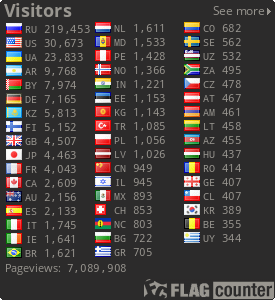All about the Apollo Program and the Moon Landings
The Apollo program is fully documented in great detail. We can find thousands of scans of raw images (pre-Photoshop, no CGI), hundreds of images of the earth, hundreds of videos and audio transmissions and their transcriptions, tens of thousands of pages of mission reports, science reports, technical debriefings, scientific results, sample cataloges, and many more on the National Space Science Data Center NSSDC (links below). It is cheaper to go to and land on the moon than to fake all this.
Why would NASA produce and fake all this documents? To deceive people that are too lazy to read it anyway?
Moon Rocks
The rockets were built and tracked by astronomers to the moon and back all over the world. The Apollo missions brought back 2415 moon rock samples weighing 381 kg that were analyzed by thousands of scientists worldwide (more Infos here). This samples are very different than rock from earth and can not be faked, because it would take hundreds of years to imitate such rocks.
Retroreflectors
There are still the 5 Retroreflectors on the moon, 3 from Apollo missions. We direct lasers to the reflectors at least once a day since more than 48 years to measure the distance to the moon to better than cm accuracy. Between 1969 and 2017 there are reported 25,689 lunar laser ranging (LLR) measurements. You can find detailed infos about LLR and download the data from Paris Observatory Lunar Analysis Center. More Infos on Wikipedia Lunar Laser Ranging experiment.
Images from Chinas Moon Lander Chang’e 3 and the Lunar Reconnaissance Orbiter
There is currently China’s lander Chang’e-3 on the moon and the images sent to earth from the surface look exactly like the images from the Apollo missions: no stars, no blast crater, same color and lighting. We have space probes orbiting the moon right now, eg. the Lunar Reconnaissance Orbiter LRO, that sent back images of the Apollo landing sites and we can even see the phaths of the astronauts that match exactly the reports.
LROC Featured Lunar Sites: Some of the most requested LROC images; from newly discovered lunar features to the closest images of the Apollo landing sites since the astronauts left:
Here are the links to the archive of the Apollo missions:
Apollo Lunar Surface Journal from the National Space Science Data Center NSSDC
All mission reports, images, videos, audios, transcripts, science reports, sample cataloges, technical debriefings, biomedical results, scientific results and many, many more:
Preliminary Science Reports Apollo 11-17
Master Catalog
The NSSDC Master Catalog is available for the queries pertaining to information about data that are archived at the NSSDC as well as for supplemental information:
Apollo 11 transcript whole flight





![[youtube width="640" height="360"]https://youtu.be/0hBKRPXIoL4[/youtube]](http://artemyev.space/wp-content/uploads/2018/05/microsputnik-t.jpg)




TikTok: tiktok.com/@olegmks
ВКонтакте: vk.com/olegmks
YouTube: youtube.com/c/OlegMKS
Яндекс.Дзен: zen.yandex.ru/olegmks
RuTube: rutube.ru/channel/23320330/